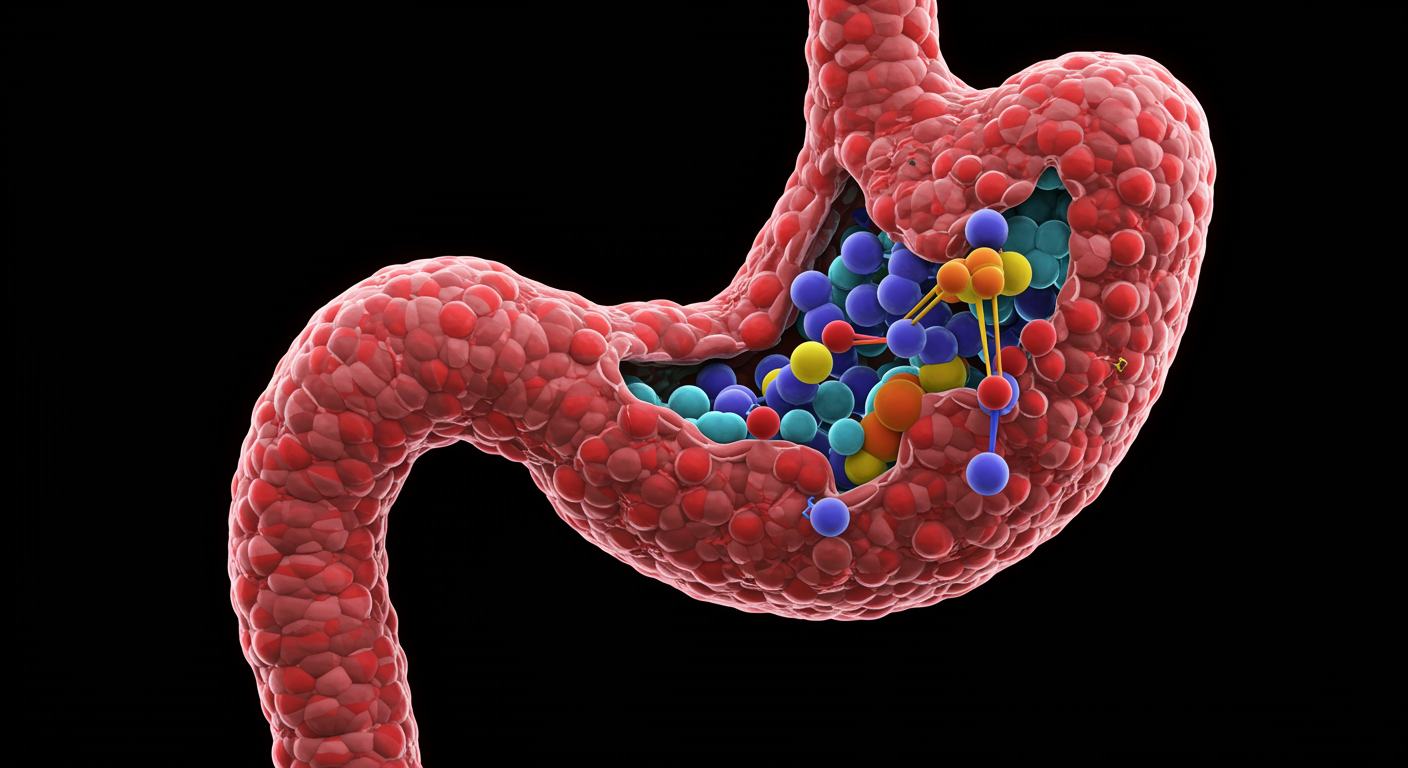How Does Your Stomach Actually Produce Acid?
Gastric acid secretion occurs through the H,K-ATPase enzyme system (the “proton pump”) in gastric parietal cells, which actively transports hydrogen ions into the stomach lumen in exchange for potassium ions. This sophisticated molecular machinery can produce stomach acid with a pH as low as 0.8, making it one of the most acidic environments in the human body and essential for digestion, nutrient absorption, and antimicrobial defense.
Dr. Kumar’s Take
Understanding the proton pump is crucial for comprehending how PPIs work and why they’re so effective. The H,K-ATPase is literally the final common pathway for all acid production - regardless of what stimulates acid secretion (food, hormones, nerves), it all comes down to this enzyme. When PPIs irreversibly bind to this pump, they shut down acid production at its source. This knowledge helps explain both the power and the limitations of acid-suppressing therapy.
What the Research Shows
This comprehensive review examines the molecular mechanisms of gastric acid secretion, focusing on the H,K-ATPase enzyme system and its regulation. The analysis covers the structure and function of the proton pump, the cellular processes that control acid secretion, and the integration of neural, hormonal, and local regulatory mechanisms.
The research demonstrates that gastric acid secretion is a highly sophisticated process involving multiple regulatory pathways that converge on the H,K-ATPase system to produce the powerful acid environment necessary for normal digestive function.
How This Works (Biological Rationale)
The H,K-ATPase is located in the secretory membranes of gastric parietal cells and functions as an active transport system that exchanges intracellular hydrogen ions for extracellular potassium ions. This process requires ATP energy and is the rate-limiting step in acid production.
When parietal cells are stimulated by histamine, gastrin, or acetylcholine, intracellular signaling cascades activate the H,K-ATPase system. The enzyme pumps hydrogen ions from the cell into the stomach lumen, where they combine with chloride ions (transported separately) to form hydrochloric acid.
Why This Matters for Health and Performance
Understanding H,K-ATPase function is essential for comprehending how acid-related disorders develop and how treatments work. This enzyme system is the target of proton pump inhibitors, explaining their mechanism of action and effectiveness. Knowledge of acid secretion also helps understand the importance of gastric acid for digestion, nutrient absorption, and antimicrobial defense.
Disruptions in H,K-ATPase function or regulation can lead to various conditions including peptic ulcers, GERD, and Zollinger-Ellison syndrome, while therapeutic manipulation of this system forms the basis for modern acid-suppression therapy.
Safety, Limits, and Caveats
The research focuses on normal physiological mechanisms and may not fully address pathological states or individual variations in acid secretion capacity. The complex regulation of H,K-ATPase involves multiple interacting systems that can be affected by age, genetics, medications, and disease states.
Additionally, the review primarily examines the biochemical mechanisms and may not fully address the clinical implications of altered acid secretion or optimal therapeutic strategies for managing acid-related disorders.
Practical Takeaways
- Understand that the H,K-ATPase is the final common pathway for all gastric acid production
- Recognize that PPI effectiveness depends on irreversible binding to this enzyme system
- Appreciate that acid secretion involves complex regulatory mechanisms beyond simple on/off switches
- Consider that individual variations in H,K-ATPase function may affect treatment responses
- Realize that this enzyme system is essential for normal digestive and protective functions
- Use knowledge of acid secretion mechanisms to understand both therapeutic benefits and limitations
Related Studies and Research
- Physiology, Stomach
- Pharmacology of Proton Pump Inhibitors
- Role of Gastric Acid in Food Iron Absorption
- Role of Gastric Acid in Preventing Foodborne Disease
- Episode 25: The Great GERD Mistake - How Medicine Made Heartburn Worse and How to Fix It
FAQs
What makes the stomach able to produce such strong acid?
The H,K-ATPase enzyme system can concentrate hydrogen ions to create acid with pH levels as low as 0.8, making stomach acid stronger than battery acid.
How do proton pump inhibitors work at the molecular level?
PPIs irreversibly bind to the H,K-ATPase enzyme, permanently disabling individual pump molecules until new enzymes are synthesized by the cell.
Can the stomach produce too much acid?
Yes, conditions like Zollinger-Ellison syndrome can cause excessive acid production through overstimulation of the H,K-ATPase system.
What happens if the proton pump doesn’t work properly?
Impaired H,K-ATPase function can lead to reduced acid production, affecting digestion, nutrient absorption, and antimicrobial defense.
How long does it take for new proton pumps to be made after PPI treatment?
Parietal cells typically synthesize new H,K-ATPase enzymes within 24-72 hours, which is why PPIs need to be taken regularly for sustained acid suppression.
Bottom Line
Gastric acid secretion depends on the H,K-ATPase enzyme system, which actively pumps hydrogen ions into the stomach to create the acidic environment essential for digestion and protection. Understanding this molecular machinery is crucial for comprehending acid-related disorders and their treatments.


